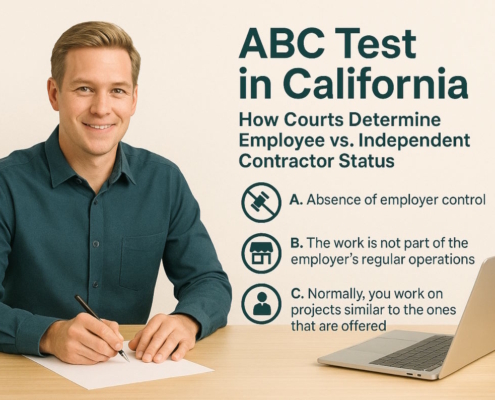What is a job offer letter?
When you hire someone, an offer letter is a crucial step because it tells the best candidate not only that you are giving them the job, but also what their role, responsibilities, and pay will be. Using an offer letter template will help you speed up the process and make sure you include all the necessary details without legally exposing your business.
There are some things that a job offer letter must include:
- Formally extends a job offer to an applicant in an official capacity
- Gives important facts like start date, salary, working hours, job title, and more
- Asks people to confirm if they are willing to take on the job
- Shows that your company is polite and cares about the new employee
- It gives you a chance to negotiate if the worker wants to talk about leave time or pay
- Makes a written record of the role’s agreed-upon terms.
In most cases, it’s sent by email after background checks are done but before an official job contract is signed. A candidate who takes the job offer will sign and return the offer letter. However, it’s important to keep in mind that offer letters and employment contracts are not the same thing.
- A job offer letter talks about the job, what it includes, how much it pays, and any benefits that come with it.
- A contract spells out the full duties and tasks of a job, the start date, and any legal obligations that both parties must meet.
If someone makes you a job offer and you take it, it’s still only a “offer” and not a promise of a job. Therefore, if there is a “at will” clause—which we go into more detail about later in this article—either the employer or the employee may decide to change their minds at any time without facing any legal ramifications.
How to write a job offer letter
Usually, job offer letters have the following:
- Sender’s details
- Details about the recipient
- Greetings
- An introduction that shows excitement and gratitude for the candidate’s interest in the job and their abilities
- Specifics of the job
- The offered income, how often payments will be made, and any other parts of the compensation
- Date to start
- Structure for reporting
- Type of job and work schedule
- Non-disclosure agreement (NDA) and confidentiality
- Next steps
- Contact details
- Closing by showing excitement and looking forward to the candidate’s acceptance
- Places for the candidate to sign and date their work
The dangers of making a bad job offer letter
A job offer letter can be helpful, but it can also be dangerous. This is because once the employee signs it, the terms of the offer become legally binding, even though the letter itself is not an employment contract.
Someone who works for the company could sue their boss and win if the letter’s wording leaves any room for doubt.
Here are some examples:
The job offer letter tells the applicant that the job is safe, but a few months later, the employee is let go because the company has to cut costs. The candidate can go to court because their job wasn’t safe without an “at-will” statement.
A job offer that only shows an annual salary means that the job is guaranteed for one year. If the employer decides to fire the worker after six months, the worker could go to court and demand that the employer pay the full yearly salary.
When someone applies for a job, it says how much they will be paid yearly, but not how often they will be paid. It’s a surprise to the employee when they get their first payment that it’s for the whole month instead of every two weeks as they thought. This means they can’t pay their bills. They go to court and say the business broke the deal because the offer wasn’t written clearly. The judge agrees.
You can see that offer letters need to be clear and fully explain everything. If you use a template, make sure that your company’s legal department checks it after you’ve written it. A court may agree with an employee that the letter described the job or benefits package incorrectly. This could cost your company a lot of money.
Checklist: Things to do before writing a job offer letter
- Perform a market study for the job opening.
As part of a market analysis, you should look into regional and industry-specific salary and benefit trends, compare your findings to those of your competitors, and then design a package that stands out from the crowd.
This is a necessary step because having this information on hand not only helps HR workers make competitive packages, it also gives you a sense of what is fair to offer and how to negotiate an agreement that works for everyone.
Think about it:
- What is the typical salary for this job in this industry?
- What basic perks are there?
- Based on averages in your business, what is a fair and cost-effective salary to offer employees at your company?
- In what ways are you willing to compromise?
- Can you offer extra perks, like flexibility, to get people to work for you?
- How much do rivals pay and what benefits do they offer for the same jobs?
- Are they finding ways to get the top people you were fighting for?
- Is your offer lacking anything compared to job offers from competitors?
- What do you think your candidate will want?
- What are their plans for their future job and income? How does this fit into the market you’re in?
- Do you know this candidate well enough?
HR tip
Compensation is the main cause of a discrepancy between the number of offers made and accepted (sometimes referred to as an offer acceptance rate).It’s very important to make sure that your pay and perks package are competitive.
- Establish the salary and benefits plan
When you make an offer, you have to know exactly what you’re giving away. As we’ve already said, using confusing or general language can get your business into trouble with the law and cost you money.
The more specifics you include in your offer letter, the better it will be for demonstrating professionalism, attracting top personnel, and shortening the hiring process.
Figure out the base pay and any possible bonuses
After studying the industry and your competitors, come up with the role’s package, which should include the following:
- Base pay
- How much the candidate makes each month and each year
- How often salaries are paid
- The different ways you can pay
- Plans for bonuses
- How to earn paid time off, vacation, sick days, and personal time
- Pay rules that are clear and fair
List perks for health and wellness
The best job candidates want important jobs that offer career growth and a good balance between work and life. To get the best employees, you need more than just a good salary:
- What kinds of health benefits do you have to offer?
- What health and wellness services does your company offer?
- What do you do to help mental health?
- Do you offer paid time off for sports or hobbies? Does your company urge people to do healthy things?
Give people tax breaks and retirement plans
All attractive job offers list extra perks for employees. Your candidates will be looking for incentives, and if they are in the market, they will know what other companies are offering. That’s why it’s a good idea to talk about them right away in your offer letter. Think about:
- What prospective employees are seeking
- If your business offers retirement plans,
- If you can choose between flexible and hybrid work,
- Any health perks you could offer
- Incentives and bonuses in the form of cash that aren’t part of normal pay and bonus systems.
- Make sure you follow the law
The offer letter is a legally binding document that all parties acknowledge and accept, despite its lack of formality as an employment contract. So, it’s very important to make sure it follows all local and national laws.
- Learn about the employment rules in your state and federal government.
- Check the terms of a job contract to make sure that they don’t get added to offer letters by accident. Some of these components are:
- Length of the job (unless it’s a temporary or fixed-term task)
- The tasks and requirements of the job
- The justifications for quitting or being fired
- Drafting legally compliant employment offer letters requires close collaboration with your company’s legal department.
- Get the signatures and approvals you need.
Add a sentence that says “at will”: this is very important to avoid any legal responsibilities. If the employer said things during the interview (orally or in writing, like in the offer letter) that made it sound like an agreement to hire, then the employer might have to follow through on it like a contract.
An “at will” clause says that the offer letter can be revoked and that either the employee or the company can end the job at any time and for any reason. This frees both parties from any suggested duties.
Without an “at will” statement, any unclear language can be used to force someone to do something based on how that language is understood.
HR tip
Legal should look over the whole offer letter, but the wording of the “at will” line is especially important. The phrasing must be exact, so be sure to add legal.
4. Offer letter for internship
An internship is a great way for students to gain experience and information in the fields they are interested in, and it can also be useful for companies that are interested in:
- Developing talent
- Getting new ideas for the company
- Putting younger team members with more experienced ones
But because these jobs usually only last for a certain amount of time, there are a few extra things that need to be in the offer letter.
How to produce a top-notch offer letter
Your offer letter form will depend on the job and your company, but there are some important things that all offer letters should have.
- A personalized message
- Begin by addressing the candidate by name and making an opening statement that shows your enthusiasm for the offer and talks directly to them.
- Make it clear that you’ve considered the candidate’s requirements and motivations by using personal pronouns and addressing them by name.
- List their skills and qualities, as well as why they are a good fit for the job and the company. Point out how the employer has taken the candidate’s interests into account when making a job offer.
- Title of the job and duties
- Explain the job and what it entails in a few words.
- Include the official title of the job and the date you expect to start.
- Full-time or part-time
- Working from home or at an office
- In charge or manager
- Supervisor or manager
- Compensation plan and perks for workers
- Paycheck frequency and amount
- Describe the perks and pay package available
- Benefits for health and retirement
- Lay out how bonuses or commissions will work
- Explain how paid leave works.
- Include any extra perks that make the job more valuable but aren’t necessarily money-related
HR tip
Keep it short. The training process will go into more detail about the benefits. In this part, you should sell the job, your company, and the reasons why you are a great place to work.
- Legal terms and situations that are important
In this part, any important legal wording and possible outcomes are highlighted.
- Do you need non-disclosure and non-compete agreements?
- Will the worker sign deals about privacy and intellectual property?
- Are there any rules about immigrants or visas?
- Are the job requirements based upon meeting certain conditions? Accepted candidates may lose their job or have their offer withdrawn if they don’t meet the requirements. Usually, these factors are:
- Screening for drugs or alcohol
- Checking criminal records
- Checking the references
- Getting proof of school credentials
- Medical checks-ups
Note: promises of future work, claims of job security, or contracts should never be part of the terms.
HR tip
To clear things up, you might want to put a disclaimer at the end of the letter saying that it is just information and not a legally binding deal or contract.
- Closing
At the end, you can give the individual a due date for their response. This will make the letter seem urgent, which will help you hire someone faster. Setting a due date will save you and the candidate time even if they don’t decide to sign.
At the end of your letter, you can say how excited you are about the individual and how welcome they are to the team. There should be a way for them to sign and date if they agree, as well as a way to get in touch if they have any problems.
Maximizing the effectiveness of your job offer letter
A job offer letter isn’t necessary, but it can be a great way to show potential employees what the company is like and get them pumped about working for you.
The best letters are friendly and professional at the same time. They are clear, to the point, and easy to understand.
- Be yourself.
- Do not use jargon or scientific terms.
- Break down any complicated ideas and terms
- Make sure that legal accepts the letter, but don’t put any legal terms in it because it’s not a job contract.
- To cut down on words and make your work clear, use active voice.
- Use easy-to-follow sentence patterns that are simple.
- Make your message easy to read by using subheadings and bullet points. This way, the candidate can see what’s on offer without having to search for it.
- Do not leave any room for doubt.
The job offer’s last steps
Make the job offer.
Not only is the content and format of the job offer crucial, but so is the way it is delivered. Email is the most common way to send a job offer, but there may be another method to reach the candidate that works better for them. Think about how they like to communicate. Finally, it’s smart to get back in touch with the applicant, especially if you set a due date for the offer.
Lastly, don’t use verbal or written errors that could hurt your company’s reputation as a workplace.
Managing talks and counteroffers
It’s possible that your letter will lead to talks or counteroffers. This isn’t a problem; in fact, it might be great for building a long-term bond with the candidate. Also, it’s much better to know what the prospective employee wants and why you might not have been able to get them to accept your offer, so promote openness and honesty.
That’s easiest to do by:
- Being ready for what the candidate will say
- Being ready to negotiate and being flexible as long as it doesn’t go against industry standards
- Being aware of the law’s limits and consequences
Do not just send an offer and wait for a yes or no response; ask the prospective employee to send you questions and listen to what they have to say. Treat the whole process as a two-way discussion.
In summary
A job offer letter has the potential to be the magic bullet that will get your most qualified applicants to accept the position.































